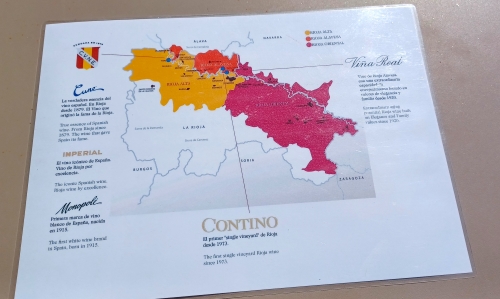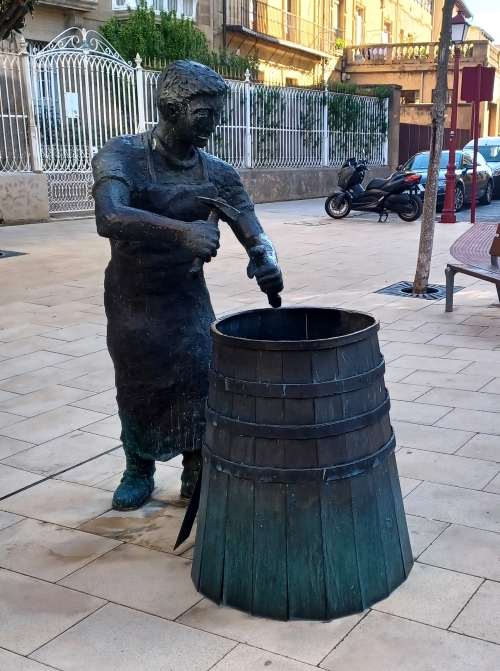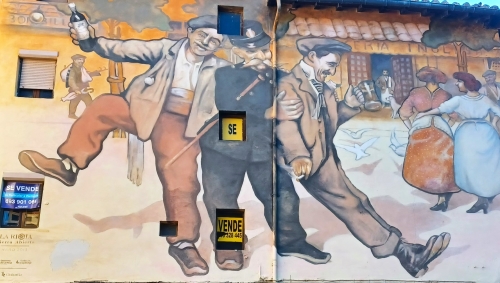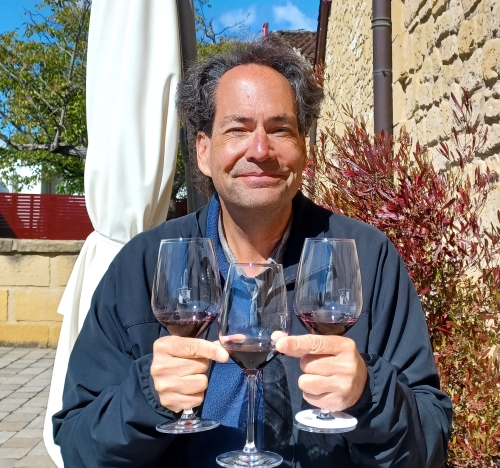Grape growing and wine making dates back about 3,000 years in northern Spain. Today, Rioja is one of the most respected wine regions in the world.

In France, Grape phylloxera decimated vineyards in the late 19th century, ultimately killing over 70% of the vines. French winemakers were puzzled as to why the vines in Spain weren’t affected by this plague.
Searching for an answer, some Bordeaux winemakers traveled to Rioja to examine the vines and winemaking process. These French vintners also brought their winemaking methods to Rioja, notably the use of French oak in the aging of the wine.
Turns out, Spanish vines and winemaking techniques had nothing to do the with the health of their crops. It was simply that the phylloxera had not yet migrated to Spain. Within a few years, Rioja would be equally devastated.
However, the French method of aging wine in oak stuck. Today, red wine in Rioja is almost always aged in oak. But, the oak is often North American.

The Rioja wine region of Spain has the highest certification of Spanish wines (DOCa). There are 3 demarked wine sub-regions in Rioja. Rioja Alta produces fruitier wines while Rioja Alavesa makes more full bodied wines. Rioja Oriental, due to its hot climate has more alcoholic wines that are often blended with wines from Alta and Alavesa.
Most of wine in Rioja is red with Tempranillo, Garnacha tinta, Mazuelo, and Graciano being the most common grapes. A little white (less than 10%) is also grown.
Haro proudly calls itself the Capital of Rioja. Technically, Logroño, about an hour away, is the political capital of Rioja. Haro, however, is making the claim that they are the center of the wine business in Rioja. While Logroño has several excellent wineries, we’ll let Haro have this one due to the concentration of world-class wineries all within walking distance of each other.

Bopping between bodegas is a fun way to spend an afternoon, walking from winery to winery and sampling different vintages. Some may require you to make an appointment. Others might try and steer you to a tour of winery which can be expensive and time consuming.
Most, however, have a nice tasting room and will let you choose a flight of wines or a glass of nice Rioja wine. Almost all the bodegas have a shop where you take a bottle or two with you and some even offer international shipping.
CVNE

Compañia Vinicola del Norte de España, CVNE, (also called Cune) has been making wine since 1879. The winery is still owned by the descendants of the original owners, brothers Eusebio and Raimundo Real de AsÚa.
CVNE garnered international acclaim soon after its inception, winning their first gold medal in 1888 at the Barcelona International Exposition. CVNE vaulted to the top of worldwide wine lists when Imperial Gran Reserva won Wine Spectator’s Wine of the Year in 2013.
When you visit the winery, they may ask if you want to take the tour. That’s fun and informative, but if you have limited time, just ask if you can do a tasting. An employee will guide you through your choices, including the Imperia. You can pair your tasting with some artisan chocolate, if you like. There’s even tables and chairs outside where you can sip and enjoy your selections. Buy a bottle from the store if you’re so inclined. Highly recommenb8n542915886790.
Bodegas Gomez Cruzado

Ángel Gómez de Arteche founded Gomez Cruzado 1886. Their wines may not be as renowned as some of the others on the this list, but I find them very enjoyable. The reds at Bodegas Gomez Cruzado are quite good but they have a white wine that is quite interesting.
Red wines in Rioja are usually 100% Tempranillo or a Tempranillo blend. But, Gomez Cruzado grows an unusual white Tempranillo grape that has the structure of a red. Confuse your taste buds by sipping a white wine that tastes like a red!
La Rioja Alta

La Rioja Alta was founded in 1890 and today’s exceptional Gran Reserve 890 harkens back to the year of the bodega’s founding. In 2004, Wine Spectator named their Lagar de Cervera was named one of the Top 100 Wines in the World.
With a patio behind the wine shop, La Rioja Alta has, perhaps, the most chill place to sip a glass. The tasting room is pretty sleek, as well.
Muga
Isaac Muga Marinez and his wife Auro Cano founded Muga in 1932. The winery is still owned and operated by the family. Muga is the only winery to have their own cooperage (wine barrel making facility) and all their wines are aged in oak with no stainless steel or concrete fermentation.

Muga offers a variety of events you can book to enjoy their wines including a course in wine tasting and even a hot air balloon ride. Of course, you can just drop by the tasting room and try a glass or two. I especially like the Torre Muga.
Wine tasting in Old Town

If you’re staying in the old town, there’s also a few spots that will do a tasting of different wines from the region. Vinoteca Rodríguez Alonso on Plaza de Paz and Hotel Arrope both have tasting stations. I also like the short wine list at the tiny wine list at Sabai Restaurante (their food is good, too!)
About the Author

Brent Petersen is the Editor-in-Chief of Destination Eat Drink. He currently resides in Setubal, Portugal. Brent has written the novel Truffle Hunt (Eckhartz Press) and the short story collection That Bird. He’s also written dozens of foodie travel guides to cities around the world on Destination Eat Drink, including an in-depth eating and drinking guide to Portugal. Brent’s podcast, also called Destination Eat Drink, is available on all major podcasting platforms.
